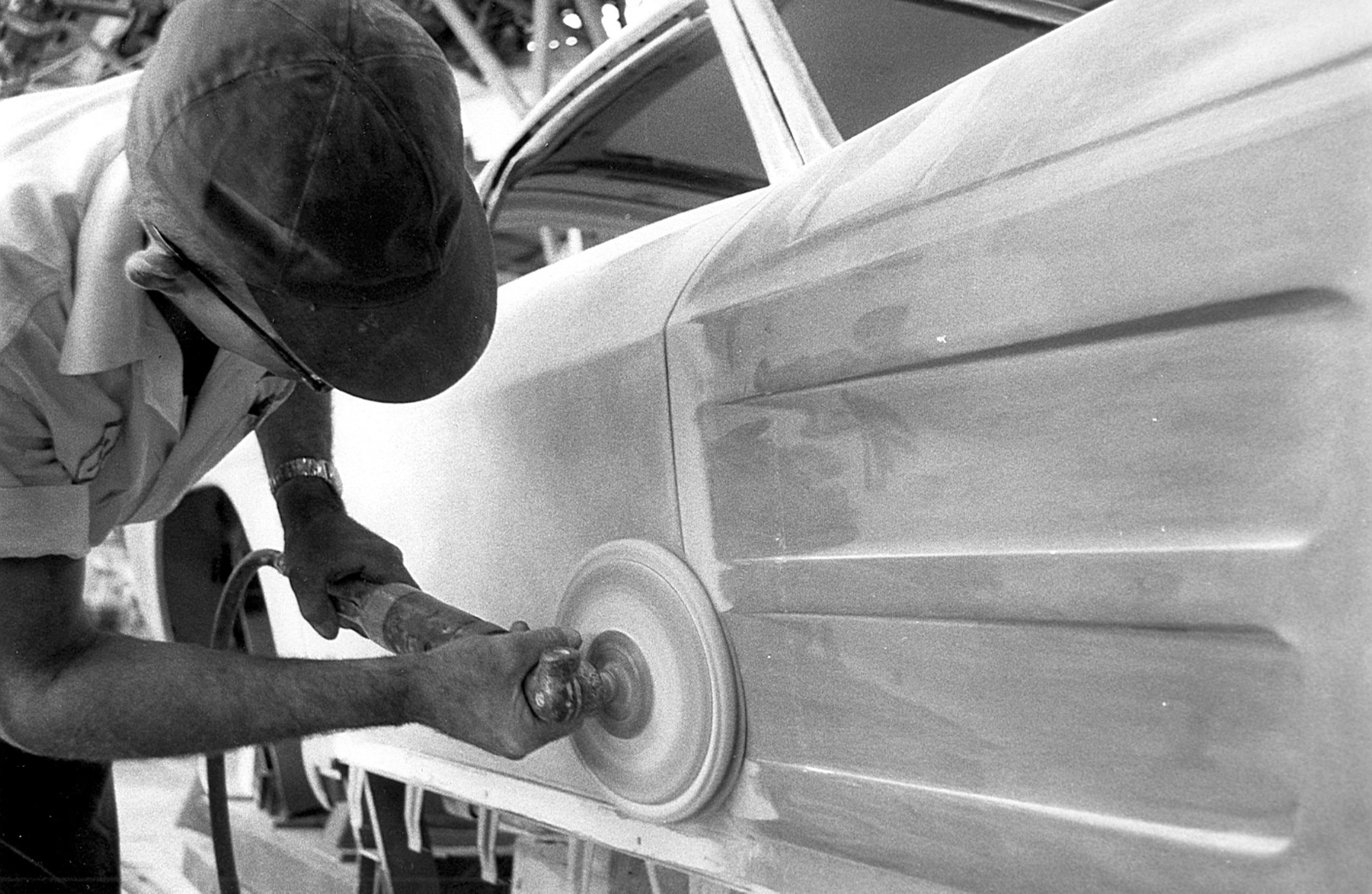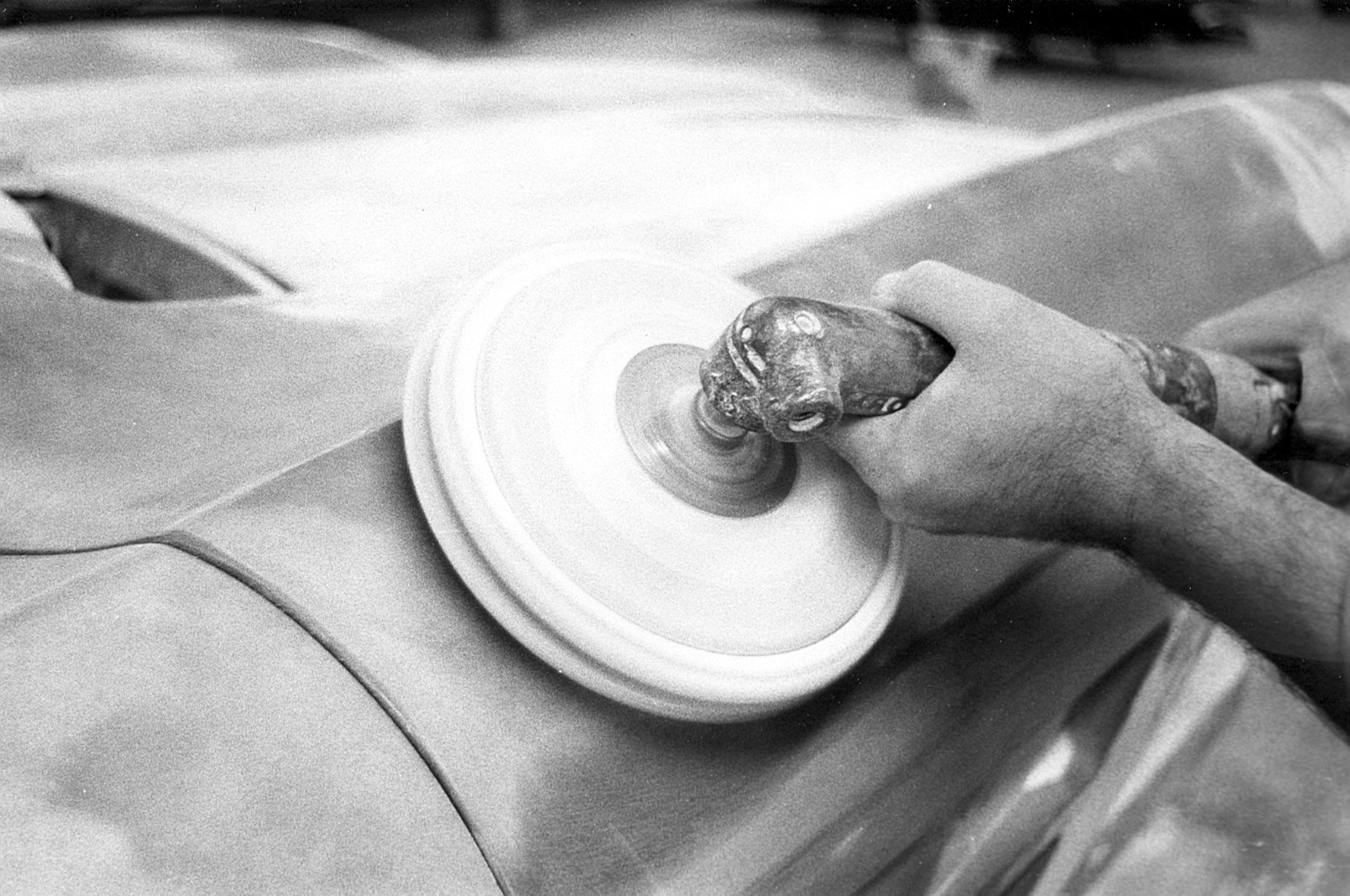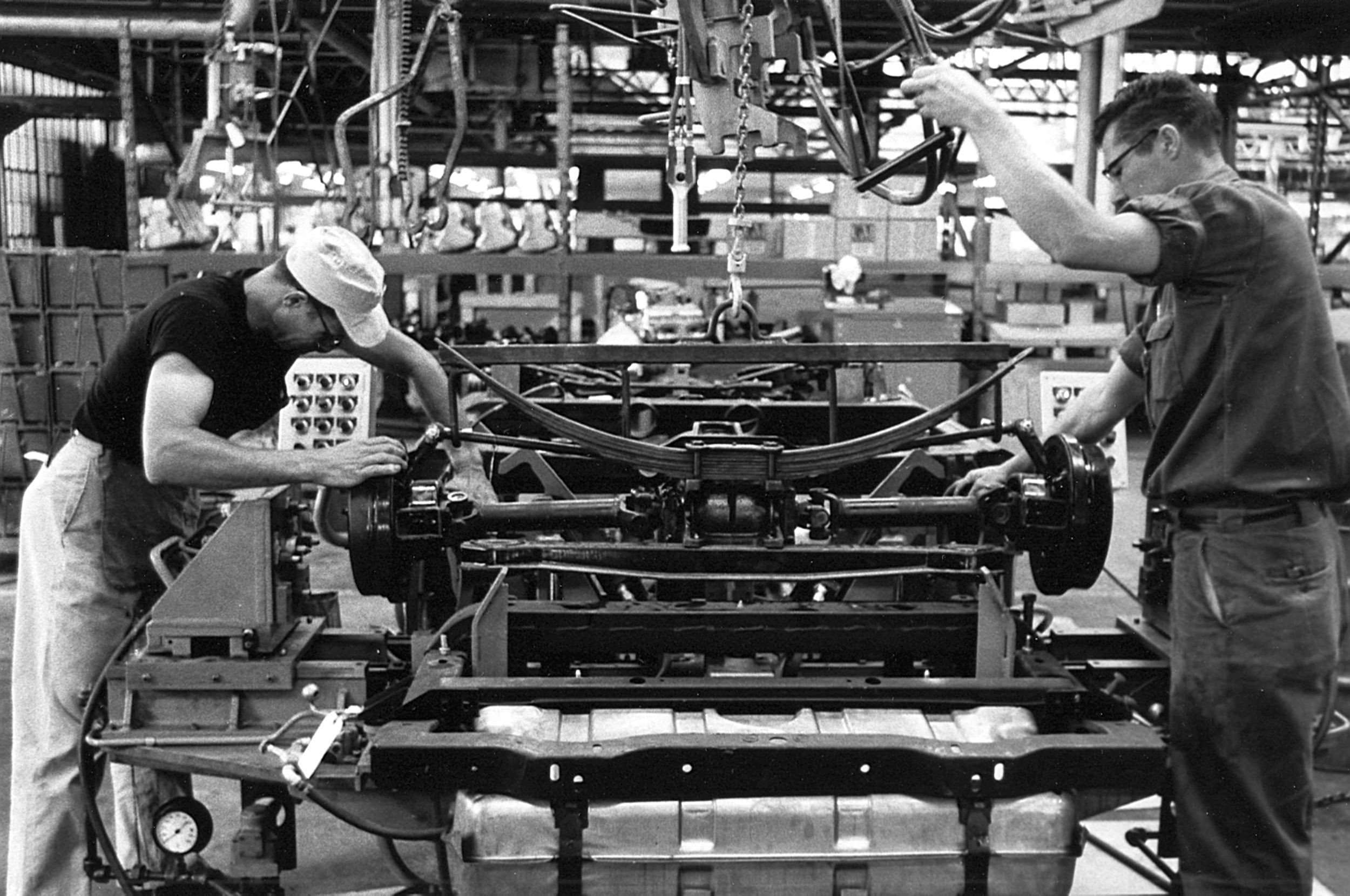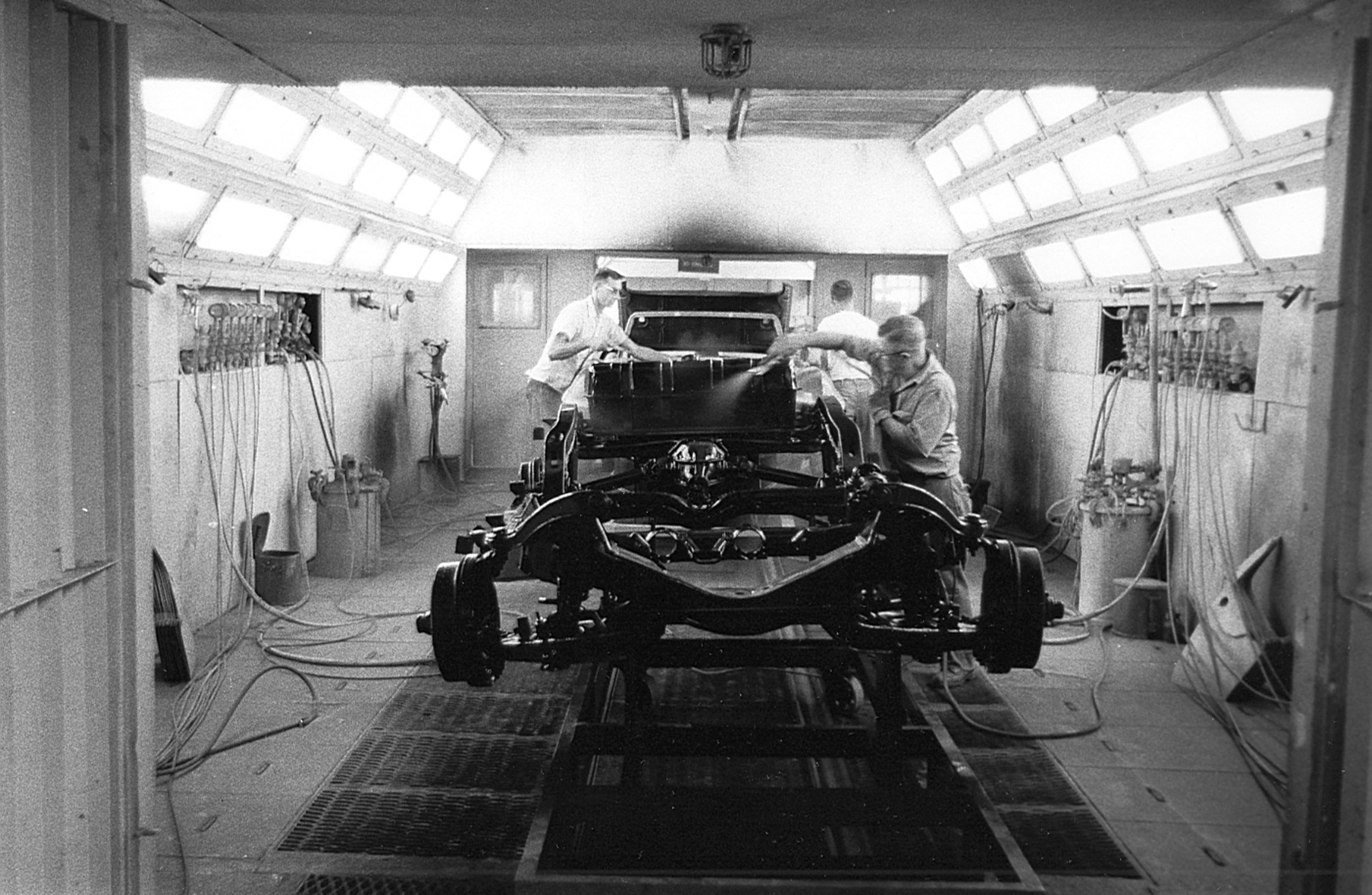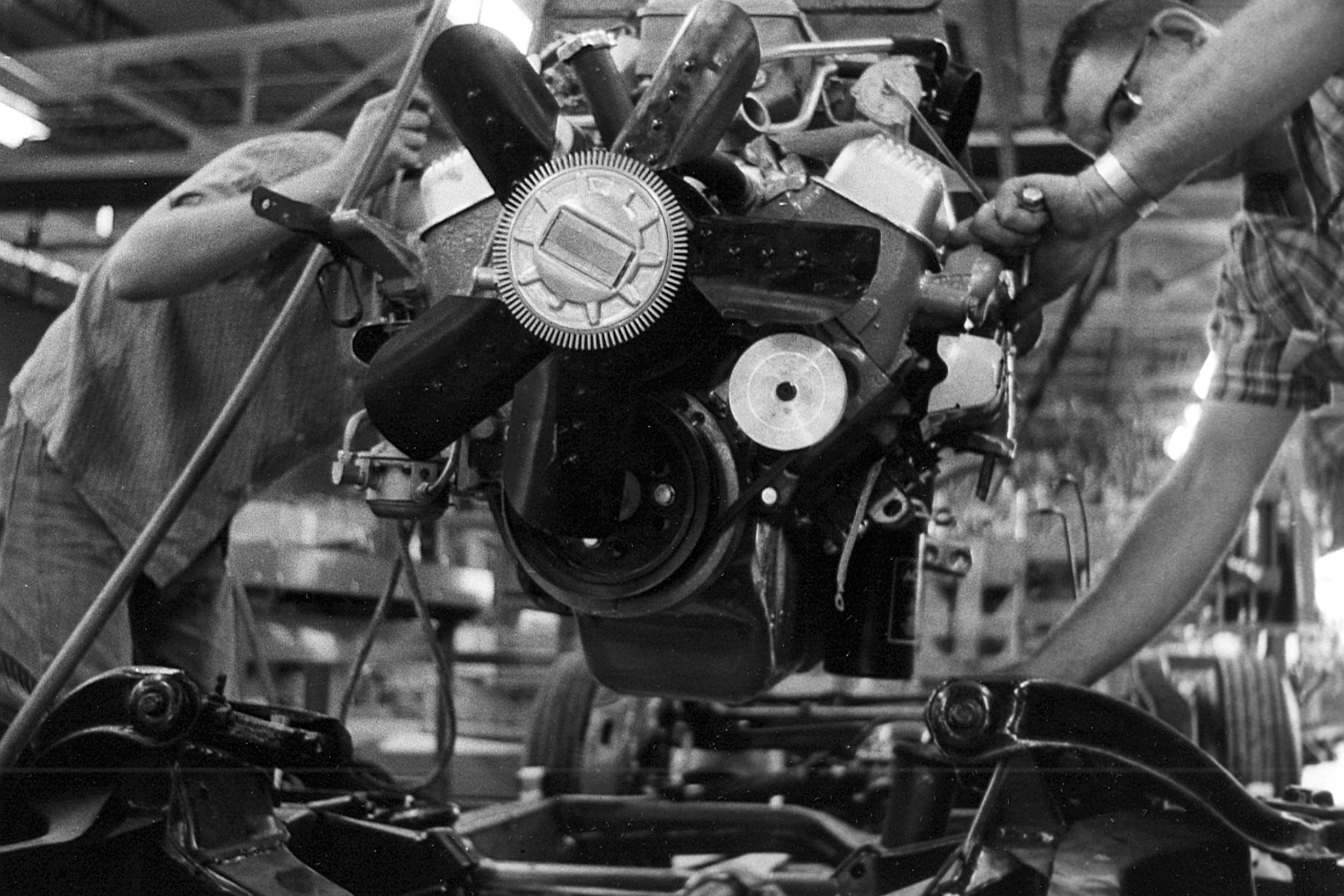The Corvette assembly plant in Bowling Green, Kentucky, is currently undergoing a major change in preparation for the up-coming, 2020 Corvette production. Moving the engine behind the passengers in the new model is a major shift. Not only in the design of the car — but also, in the scope of changes, it will mean during the car’s assembly. The entire plant will need to be revamped to accommodate the new processes.
However, before Corvettes were built in Bowling Green, they were all assembled in St. Louis, Missouri — save for the first year of production. During that time, the first 300 Corvettes were hand-assembled in Flint, Michigan. In 1962, St. Louis assembly was preparing for the changing of the guard that would see the first midyear cars roll off the assembly line. The ’63 Corvette is one of the most iconic Corvette designs and was about to come to fruition. Thankfully, General Motors had a photographer there to document the occasion.
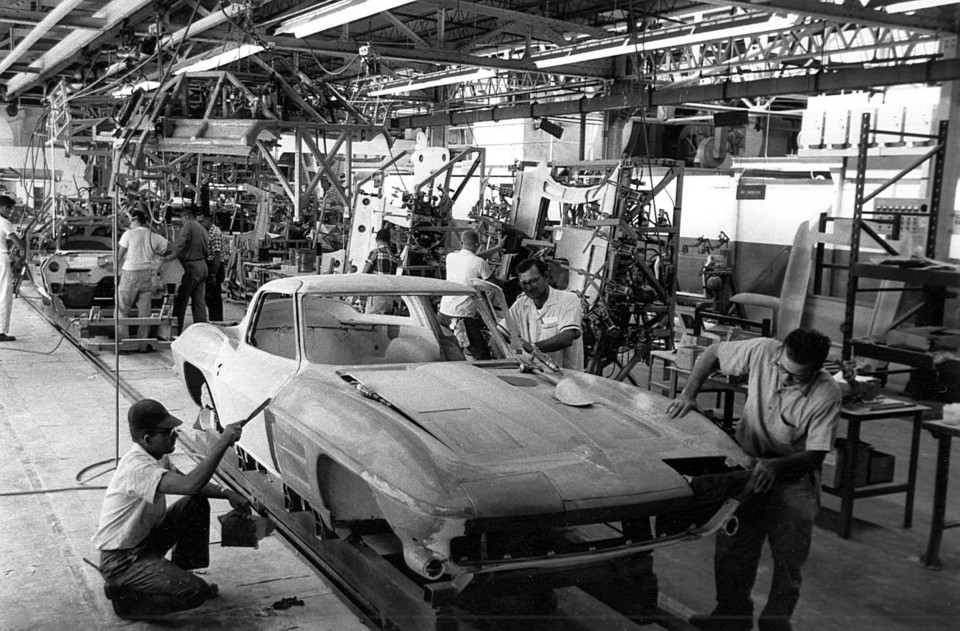
Some of the images appear to be on the actual assembly line while others may have been from specific pilot-line tooling areas. Note the next car down the line has yet to have its body assembled using the overhead jig to hold the various panels in place.
Why A Pilot Line?
Today, assembly plants are mechanized beyond comprehension. But, as GM was preparing to build one of the most recognizable body styles in its history, things were very much a hands-on process. With so much of the car changing from the previous production, it was imperative to make sure everything fit as expected. If any issues were found, they could immediately be corrected on the line.
Much fitting was done by hand with sanding discs to ensure seams and panels fit properly. Repairs or pits on the surface were filled and then finished in preparation for painting.
As such, there are typically small variances between a pilot-line car and production units that came after it. Back in 1962 — when these pilot-line Corvettes were working their way through the St. Louis plant — many of the components used in their construction weren’t actually production parts. Both internal and external trim components were tweaked for production to finalize the finish and ensure they fit properly with the rest of the vehicle. For the ’63 Corvette pilot-line cars we have seen, hand-laid fiberglass was used extensively on the underside of the cars. In some instances, it was so thin you could see light through it!
When building pilot cars, the number of actual cars built for a particular year is pre-determined. The number depends on how many cars are needed for various testing, promotional photography, or even to hit the show circuit. It is believed that 25 pilot cars were built for 1963 production. Of those, only a handful have surfaced. Thankfully, we have a record of their trek down the assembly line in these photos that have worked their way around the hobby.
The chassis was assembled with the frame upside down. Once assembled, a crane was used to flip the frame in preparation for the engine and transmission, in this case, a 360-horsepower Fuelie.
A Day In The Life
GM has a strict rule about photographing production lines. The fact these are staged all but verifies they are indeed GM photos. Dating the run of known pilot-line Corvettes for 1963 reveal these photos were taken sometime in September of 1962, as records show pilot-line Corvette number 15 was built on September 17, 1962.
They say a picture is worth a thousand words. So, we decided to combine the entire run of pilot line assembly images in a single gallery for you to observe. We’ve also picked out a few images to highlight interesting tidbits along the way. Check out the gallery below to see all the images.
Even though so much has changed in how cars are produced today, the idea of producing pilot-line cars is still in use for many of the same reasons it was first instituted. Interestingly, many of the ways these cars were produced has changed significantly. Keen-eyed readers will quickly notice the lack of safety equipment used during this time. Spraying lacquer paint and sanding fiberglass without respirators today would be cause for dismissal. Back then, it was all in a day’s work. Maybe that’s why manufacturers look down upon taking photos of the work stations.
We may not know exactly why these photos were taken, but we are very glad they were. Through them, we get a better glimpse into exactly how these cars were built and get to see the faces of some of the men who built them. The fact the St. Louis Corvette assembly plant doesn’t exist anymore makes them that much more valuable as a historical resource, and a Corvette treasure.




